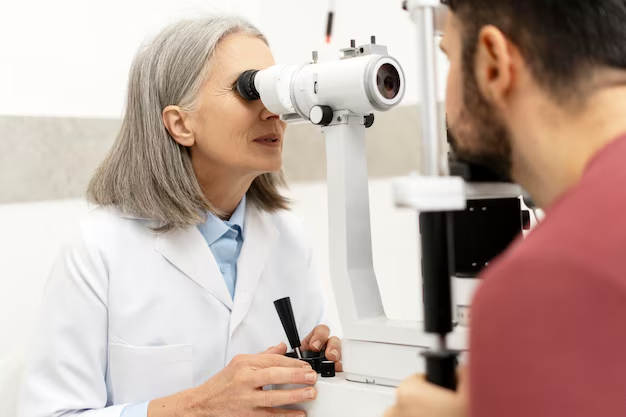Understanding Cataracts and Eye Pressure: What You Need to Know
When grappling with the array of eye health concerns, a common question arises: Can cataracts increase the pressure in your eye? This question not only resonates with those experiencing visual challenges but also affects anyone interested in maintaining optimal eye health. To offer clarity, this article will navigate the interplay between cataracts and eye pressure, examining how they relate and the broader implications for your well-being.
What Are Cataracts?
Cataracts develop when the lens of the eye becomes clouded, diminishing the clarity of vision. This condition is predominantly age-related, manifesting as proteins in the lens clump together, obstructing the passage of light. While aging remains the primary cause, other factors such as diabetes, smoking, and prolonged exposure to ultraviolet light can accelerate the formation of cataracts.
Symptoms to Watch For:
- Blurry Vision: A general haziness affecting sight.
- Sensitivity to Light: Difficulty seeing in bright conditions.
- Faded Colors: Diminished color vibrancy.
- Halos Around Lights: Particularly noticeable at night.
While cataracts primarily affect the clarity of vision, could they also have an impact on the pressure within the eye?
Understanding Eye Pressure
Intraocular pressure (IOP) is the fluid pressure inside the eye, crucial for maintaining the eye's shape and functionality. This pressure is regulated by the production and drainage of aqueous humor, a fluid that nourishes the eye and carries away waste. When the balance between production and drainage is disrupted, changes in pressure may occur, potentially leading to conditions like glaucoma.
Measuring Eye Pressure:
Eye pressure is typically measured in millimeters of mercury (mmHg). A normal reading falls between 12 and 22 mmHg, though variations can occur without necessarily indicating a problem.
Can Cataracts Affect Eye Pressure?
The direct relationship between cataracts and increased eye pressure is not straightforward. However, scenario-specific interactions exist where cataracts could indirectly influence eye pressure, particularly when surgical intervention or advanced cataract conditions are involved.
Cataract Surgery and Eye Pressure:
- Pre-Surgery Swelling: In some cases, cataracts can cause the lens to swell, affecting fluid drainage and increasing IOP.
- Surgical Impacts: Post-operative spikes in eye pressure may occur temporarily after cataract surgery, usually settling down as the eye heals. Monitoring by an eye professional during recovery is crucial to maintain stable eye pressure.
Advanced Cataracts:
In rare instances, severely advanced cataracts might cause secondary glaucoma due to abnormal lens swelling or displacement, affecting the normal flow of aqueous humor and leading to increased pressure. This scenario underscores the importance of timely cataract diagnosis and treatment before they reach an advanced stage.
Holistic Eye Health and Prevention
Proactive Eye Care Tips:
- Regular Eye Exams: Stay attuned to changes in eye health, catching issues early.
- Sunglasses: Use UV-blocking sunglasses to shield your eyes from harmful rays.
- Healthy Lifestyle Choices: Maintain a balanced diet rich in antioxidants and omega-3 fatty acids.
- Eye Safety: Protect eyes from injury during activities and work.
Eye Pressure Monitoring
- Regular Monitoring: Especially if you have risk factors like family history of glaucoma or existing eye conditions.
- Understanding Fluctuations: Normal daily variations in eye pressure can occur, influenced by factors like exercise, caffeine, and body position.
Exploring Cataract Treatments
When to Consider Cataract Surgery
Cataract surgery is typically considered when vision impairment affects daily activities. The procedure involves replacing the cloudy lens with a clear artificial one, offering a significant vision boost.
- Vision Improvement: Most patients see a marked enhancement in visual clarity.
- Managing Eye Pressure: Intraocular pressure is typically monitored before and after the procedure to ensure stability.
Non-Surgical Management
While surgery remains the definitive solution, some lifestyle adjustments can slow cataract progression:
- Dietary Adjustments: Incorporate foods high in vitamins C and E.
- Smoking Cessation: Reducing tobacco use can have a positive impact on eye health.
Addressing Concerns with an Eye Specialist
Comprehensive eye care includes consulting with an ophthalmologist who can evaluate both cataract presence and eye pressure concerns. Regular exams allow for personalized care, ensuring interventions are tailored to individual needs and conditions.
Questions to Discuss with Your Eye Care Provider:
- How do cataracts specifically affect my vision and eye pressure?
- What monitoring measures are in place for my condition?
- What are the potential implications of increased eye pressure on my eye health?
Final Insights
Understanding the connection between cataracts and eye pressure underscores the importance of vigilance in eye health. While cataracts alone may not directly cause increased eye pressure, their progression can introduce complications affecting ocular pressure and overall eye well-being.
The journey to eye health begins with education and proactive care, empowering you to make informed decisions regarding your vision health. Prioritizing regular eye check-ups and healthy lifestyle habits forms the foundation of preserving both vision clarity and eye pressure stability.
Key Takeaways:
- 👁️ Cataracts primarily cloud vision but can indirectly affect eye pressure in advanced cases or after surgery.
- 👓 Regular eye exams are crucial for early detection and management of potential complications.
- 👍 Proactive care, including UV protection and a healthy diet, supports overall eye health.
- 🔍 Consult with an eye specialist regarding personalized eye care and treatment options.

Related Articles
- Are Cataracts Curable
- Are Cataracts Genetic
- Are Cataracts Hereditary
- Are Cataracts Nuclear Sclerosis
- Are Cataracts Painful
- Are Ivizia Eye Drops Okay After Cataract Surgery
- Are You Awake During Cataract Surgery
- Are You Awake For Cataract Surgery
- Are You Put To Sleep For Cataract Surgery
- Are You Sedated For Cataract Surgery